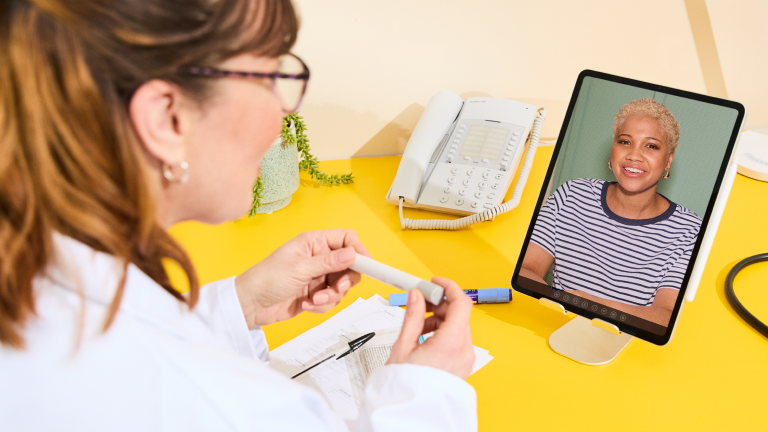How to navigate the Mounjaro shortage


If it feels like GLP-1 medications have been in short supply pretty much since they came on the market, it’s because they have. For years now, these medications that treat both obesity and type 2 diabetes have gone on and off the FDA’s drug shortage list. And that doesn’t seem to be changing anytime soon. Take Mounjaro, which first appeared on the list in late 2022 and only recently has made moves to get off it. While the supply chain issues are still being worked out, Mounjaro may stay in short supply—and that’s a problem since not treating your type 2 diabetes isn’t really an option. Here’s how you can work with your prescriber, your pharmacist, and your online weight-loss clinic to stick to your treatment plan and stay healthy.
Is there a shortage of Mounjaro?
The FDA's drug shortage registry lists Mounjaro as currently in shortage, but Eli Lilly (the manufacturer of Mounjaro) said in August 2024 that all doses were available. (The dosage strengths of Mounjaro begin at 2.5mg and are scaled up to a maximum of 15mg, if needed.) Even so, you may find certain doses of Mounjaro on backorder at your pharmacy. A note: While this is true at the time of publication, things can change—visit the FDA tracker for the latest shortage information.
Why is there a shortage of Mounjaro?
One major reason for the Mounjaro shortage is that it can be used to treat two different health conditions: type 2 diabetes, which it’s FDA-approved for, as well as obesity. While Mounjaro itself isn’t approved for weight loss, there’s a version of tirzepatide that is (Zepbound), so some providers may prescribe Mounjaro off-label for obesity if clinically appropriate and Zepbound or other online weight-loss medications are backordered.
Adding to its popularity: Studies show tirzepatide (Mounjaro and Zepbound) can result in larger weight loss than other GLP-1s. As a result, “the public perception is that it's ‘better,’ which further enhances demand,” says Dr. Sarah Fishman, M.D., a board-certified endocrinologist at Premier Endocrine in New York, NY.
And Eli Lilly, Mounjaro’s manufacturer, has had a tough time making enough of the medication to meet the high demand. They aren’t able to simply construct a new manufacturing facility to boost production, according to Erin Fox, associate chief pharmacy officer at University of Utah Health. “It’s a very intensive process,” she says, that takes a lot of money and time.
On top of that, the shortage makes it hard for Eli Lilly to estimate the true demand. Pharmacies are ordering in bulk to try and get enough for their patients, which can skew the numbers, says Fox. This leads to a big disconnect between the true clinical need, what’s actually available in the supply chain, and when more will be available, she adds.
Consequences of the Mounjaro shortage
A Mounjaro shortage can upend a patient’s treatment plan. “For patients with diabetes, this can have a significant impact on their diabetic management and control,” says Fishman, who emphasizes that she’s diligent in her practice to ensure that her patients can find alternatives (more on those below). As tirzepatide treats type 2 diabetes by regulating blood sugar and promoting weight loss, going without it can lead to spikes in blood sugar and weight regain.
What to do if Mounjaro is out of stock
Even if Mounjaro is out of stock at your usual pharmacy, you have some options. If you still have some left in your medication supply, ask your pharmacist if they’re expecting any shipments in the near future. “They should have a good idea if they're getting any orders at all,” says Fox. “And that can help you understand if it's likely that your prescription will be filled.” If they do, ask to be put on a waitlist so that you get notified when the medication comes in.
If they are out of stock and expect to remain that way, try other pharmacies. “Sometimes, switching can actually help you get better access,” says Fox. “A smaller pharmacy might be able to help you better than a larger chain, or vice versa.” This is where being a member of the WeightWatchers Clinic can help: Your Care Team will call up to 10 pharmacies at a time on your behalf to help you locate GLP-1 medications like Mounjaro during shortages. You also have access to your clinician, registered dietitian, and fitness coach to ensure that if you do miss a dose, you can adopt strategies to keep you on track.
If you can’t find Mounjaro anywhere, talk to your provider about trying an alternative. The exact availability of GLP-1s is constantly in flux, so you may be able to get your hands on the other tirzepatide medication (Zepbound), another type of GLP-1, or a different type of medication to control your blood sugar.
Mounjaro alternatives
The obvious alternative to Mounjaro is Zepbound, which is the same drug — tirzepatide — but is FDA-approved for weight loss. Some doses of Zepbound for weight loss are also in shortage, but your pharmacy or a different one nearby might have a supply of what you need.
Another option is a different GLP-1, like Ozempic (semaglutide) or Victoza (liraglutide). You can talk to your provider about switching temporarily to one of those if they are more available at your pharmacy, but it isn’t always a simple transition. Switching can be “more challenging for patients on higher doses of Mounjaro,” says Fishman. That’s because the dosages between brands and medications don’t necessarily align in their potency.
Along with your provider, you can also explore medications that manage blood sugar differently than GLP-1s. For instance, dipeptidyl peptidase 4 (DPP-4) inhibitors work similarly to GLP-1s in that they help regulate blood sugar after meals, whereas sodium–glucose cotransporter 2 (SGLT2) inhibitors can actually reduce the risk of cardiovascular events — making both potential substitutes for Mounjaro.
The bottom line
The Mounjaro shortage likely won’t go on forever, but there’s no telling exactly when supply will meet demand. Talk to your pharmacist to find out if they expect more soon and call around to other pharmacies since they may have the medication in stock. If you can’t find Mounjaro anywhere, talk to your provider about other medications you can take in order to manage your blood sugar without having to worry.
FAQs
The FDA’s current shortage tracker reports that Mounjaro is becoming available again, but you may not see it at your pharmacy immediately. “Usually, the company will give you an estimated release date, and then it will take at least one or two weeks for the drug to travel from the manufacturer to the wholesaler to the pharmacist,” says Fox.
Fox recommends calling around — since again, different pharmacies may work with different wholesalers and therefore might have a better supply. If you're a member of the WeightWatchers Clinic, your Care Team will call up to 10 pharmacies at a time on your behalf to help you locate GLP-1 medications like Mounjaro during shortages.
Mounjaro can stay in your system for four to five weeks, but its effects for managing blood sugar only last about a week.
This content is for informational purposes only and does not constitute medical advice, diagnosis or treatment. It should not be regarded as a substitute for guidance from your healthcare provider.
Tizepatide is better than semaglutide: The New England Journal of Medicine (2021). "Tizepatide versus Semaglutide Once Weekly in Patients with Type 2 Diabetes." nejm.org/doi/full/10.1056/NEJMoa2107519
Eli Lilly shares guidance: Eli Lilly Investors (2023). "An Open Letter From Eli Lilly and Company Regarding Certain Practices Related to Mounjaro® and Zepbound®." investor.lilly.com/news-releases/news-release-details/open-letter-eli-lilly-and-company-regarding-certain-practices
People will pay out of pocket: CNBC (2024). "Here’s how much people are willing to spend on weight loss drugs, according to a new survey." www.cnbc.com/2024/03/23/weight-loss-drug-cost-how-much-people-are-willing-to-spend.html
The FDA reports tirzepatide shortage: FDA Drug Shortages (2024). "Current and Resolved Drug Shortages and Discontinuations Reported to FDA." www.accessdata.fda.gov/scripts/drugshortages/dsp_ActiveIngredientDetails.cfm?AI=Tirzepatide%20Injection&st=c
What happens if you stop tirzepatide: JAMA (2024). "Continued Treatment With Tirzepatide for Maintenance of Weight Reduction in Adults With Obesity." jamanetwork.com/journals/jama/fullarticle/2812936
Avoid compounding pharmacies: FDA (2023). "Drug Compounding and Drug Shortages." fda.gov/drugs/human-drug-compounding/drug-compounding-and-drug-shortages
Alternatives to Mounjaro: Clinical Diabetes (2023). "Special Report: Potential Strategies for Addressing GLP-1 and Dual GLP-1/GIP Receptor Agonist Shortages." /www.ncbi.nlm.nih.gov/pmc/articles/PMC10338283/pdf/diaclincd230023.pdf
DPP IV Inhibitors: National Library of Medicine (2023). “Dipeptidyl Peptidase IV Inhibitors.” https://www.ncbi.nlm.nih.gov/books/NBK542331/
SGLT2 inhibitors: National Library of Medicine (2023). “Sodium-Glucose Transport Protein 2 Inhibitors.” https://www.ncbi.nlm.nih.gov/books/NBK576405/
